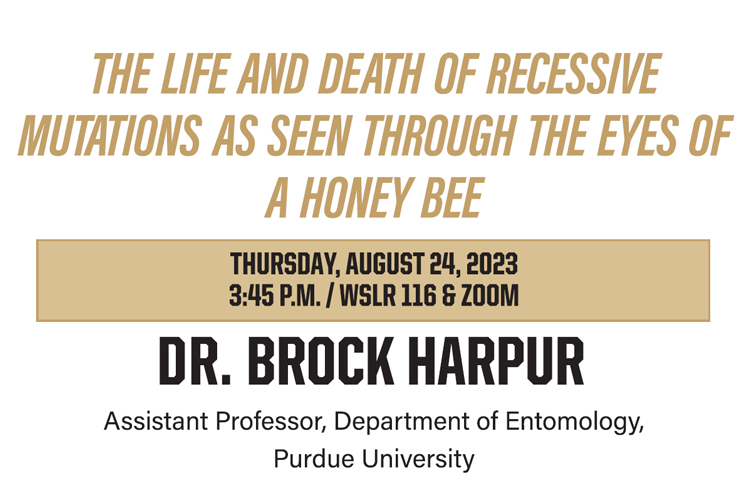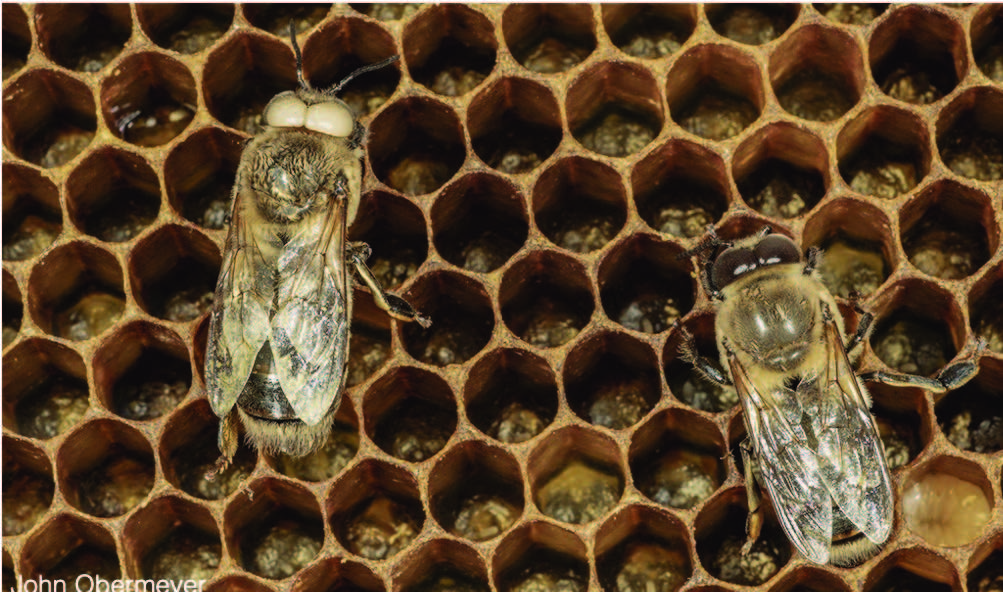
ENTM SEMINAR | Dr. Brock Harpur: The Life and Death of Recessive Mutations As Seen Through the Eyes of A Honey Bee

Haplodiploidy is among the most common sex determination system in animals. The Hymenoptera (bees, wasps and ants) are all haplodiploid and males, generally, result from unfertilized eggs while females result from fertilized eggs. Because males are typically haploid, they express any recessive mutations inherited from their parent. Classically, this has been suggested as a means for populations to 'purge' deleterious alleles via purifying selection on haploid males expressing deleterious recessive traits. There are few real-world examples of the 'haploid purge! Here, my group used a community science approach combined with in-field behavioral assays and multiple sequencing technologies to identify mutations underlying deleterious traits in honey bees and quantify their fitness effects. Our work provides new insights into the genetic origins of phenotypic variation in bees and provides a case study for how recessive mutations impact fitness.